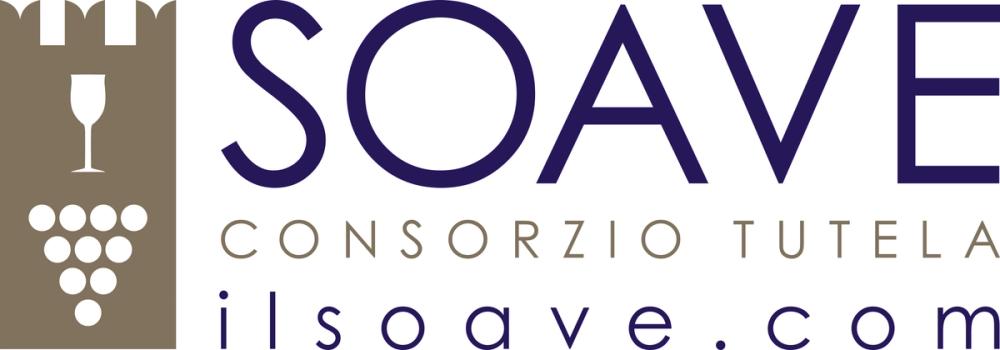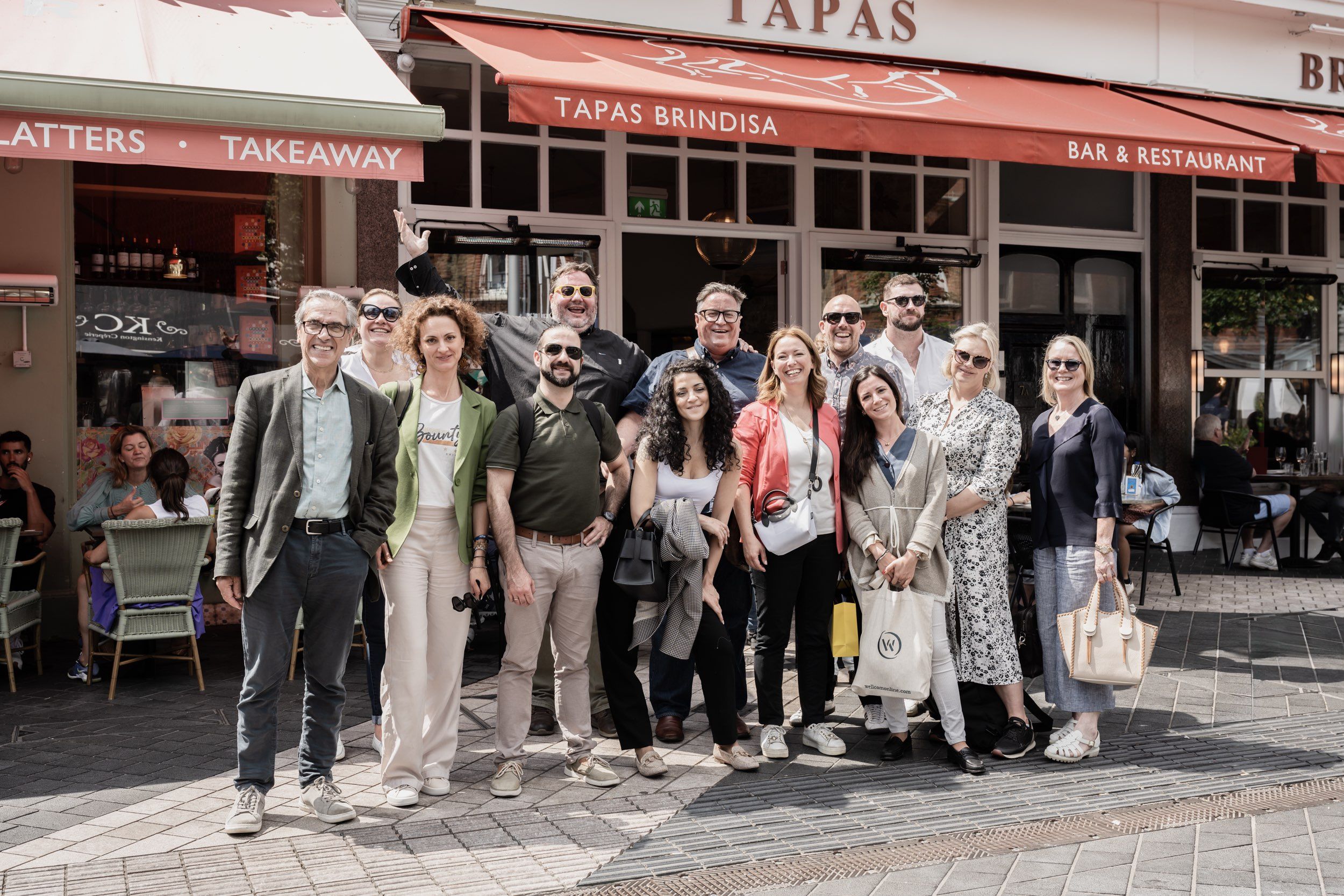Soave has worked hard for decades, if not centuries, to become a world renown wine region. One of a handful worldwide where the name of the region and its wine are as famous as each other.
Its success largely lies in all parts of the Soave winemaking community working together for a common goal. Where the work of the large co-operatives and the small medium-sized family businesses are just as important as the influence of the large branded wine businesses that have helped promote and sell Soave in all corners of the world.
But for all its history and recognition how front of mind is it for busy buyers who have the world at their feet when it comes to finding the best and most effective wines for their lists? How relevant are Soave wines for the style and type of wines they want to be selling? Are they as up to speed with what is happening in the region as they might like?
How: Going on Tour
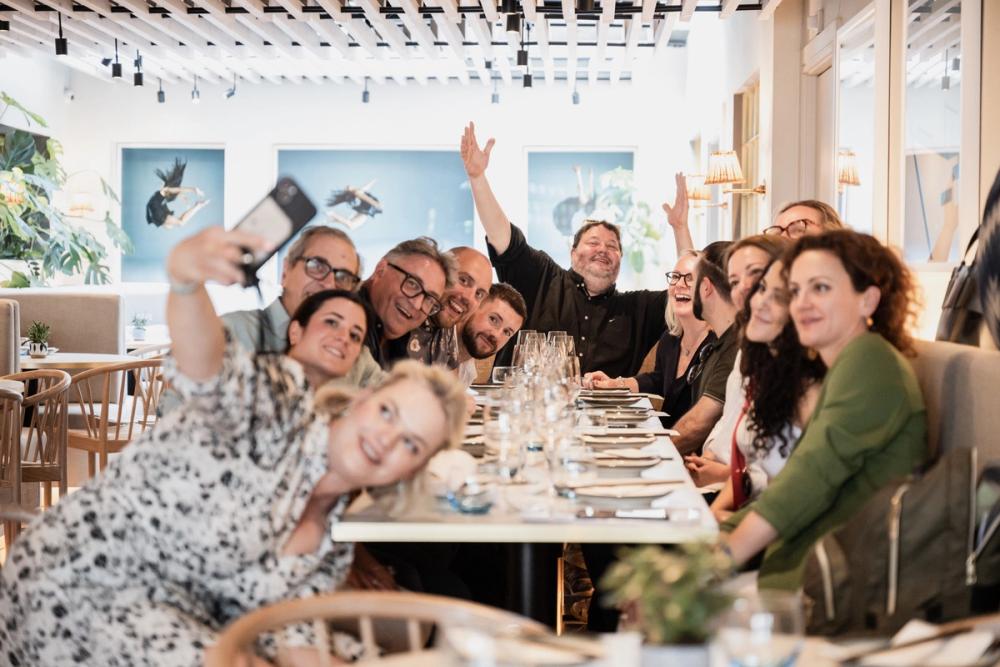
The Buyer's Soave Restaurant Tour was a chance for leading wine buyers, merchants, importers and writers to come together and assess Soave's potential in the premium on-trade and beyond
That is what The Buyer Soave Restaurant Tour was all about. The chance for buyers, merchants, importers and sommeliers to stop, reflect and take a deep dive into what Soave might be able to offer them if given a second chance.
The chance for them to taste a wide range of different styles of Soave from across the appellation in the environment where they are made to be enjoyed - with food and in restaurants. The opportunity to see how these wines perform against different styles of food and cuisines. Can we support and promote Soave wines on more lists around the country?
To help us put Soave through its paces was a talented panel of buyers who could each bring their own area of expertise and insights to the event. They included:
Joe Wadsack, wine consultant and broadcaster
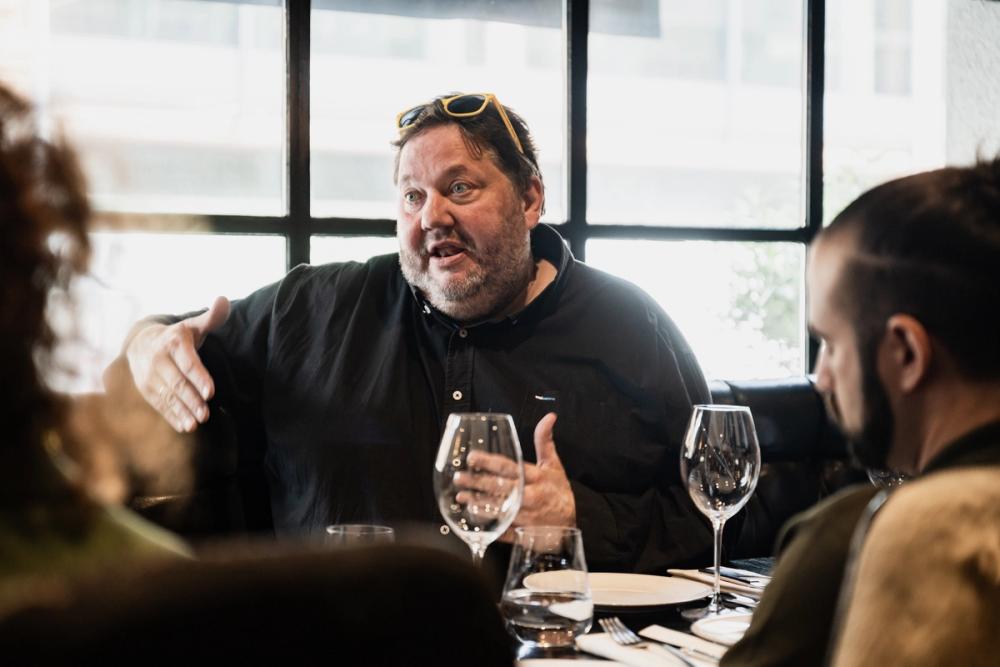
Former supermarket wine buyer, Joe Wadsack is now of the UK’s most in demand commentators, broadcasters and presenters for wine and spirits at food and drink festivals as well as running his own YouTube show, The Drinks Coach. He is also a senior judge at the International Wine Challenge.
Silvia Panetta, sommelier, Rare Restaurant Group

Silvia Panetta is part of the respected sommelier and wine team at the Rare Restaurant Group that includes M Restaurant and the network of Gaucho restaurants around the country.
Alessandro Comitini, brand development at Armit Wines

Alessandro Comitini is part of the rejuvenated brand development team at Armit Wines working with key producers around the world. He was previously UK and Italian wine buyer at Amathus Drinks.
Sergio De Luca, director of buying for Italy at Enotria&Coe

One of the UK’s most respected and knowledgeable buyers for Italian wine who has helped Enotria&Coe build up its expertise and reputation for sourcing Italian wines for all palates and budgets.
Abbie Bennington, wine educator and specialist wine writer
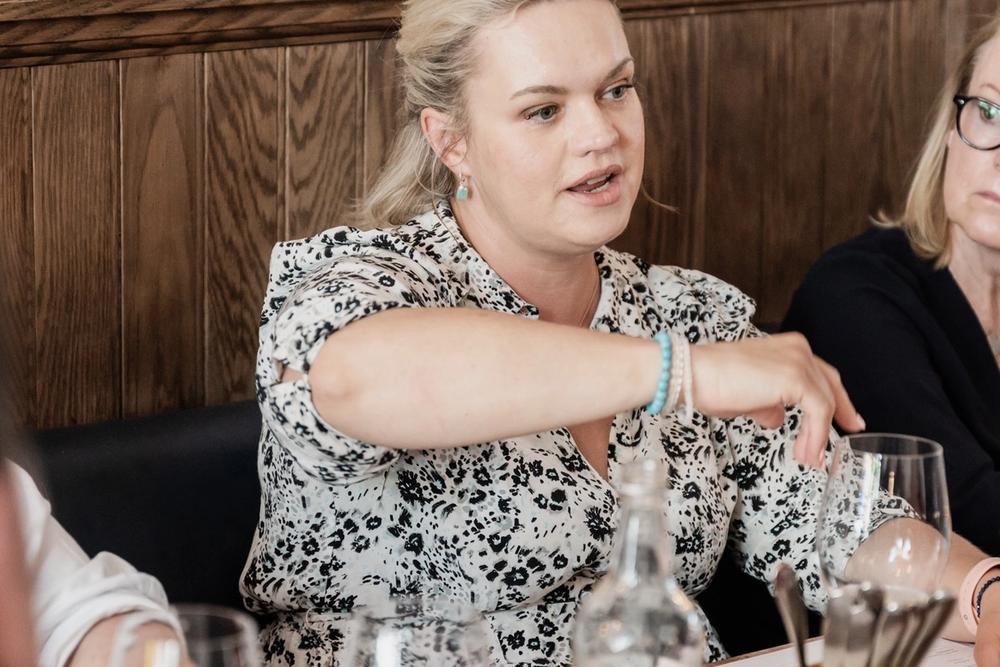
Former BBC news producer Abbie Bennington has successfully changed careers to set up her own wine consulting, judging and WSET training business - www.abvtastings.com - as well as being a regular writer for a growing list of wine publications including being a regular contributor to The Buyer.
Harry Crowther, wine buyer Good Pair Days
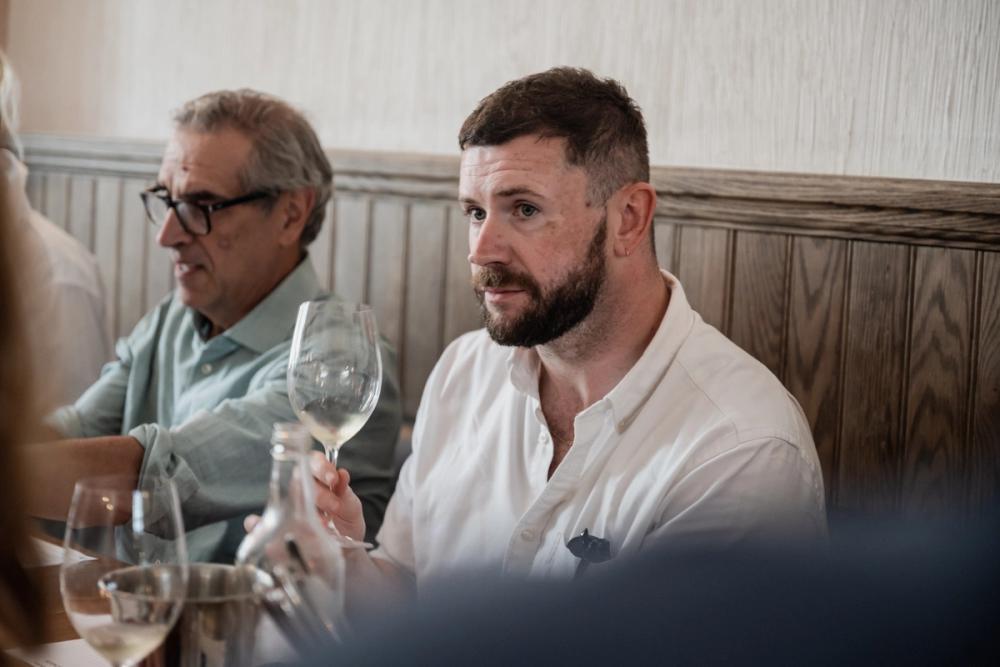
Highly experienced and respected wine buyer who has worked across all channels of the trade as a top sommelier and restaurant buyer at high profile venues such as Sketch, M Restaurant, in specialist retailing at Hedonism and is now head of wine buying in the UK for online site, Good Pair Days.
Erin Smith, e-commerce wine consultant and former MD of Slurp Wine
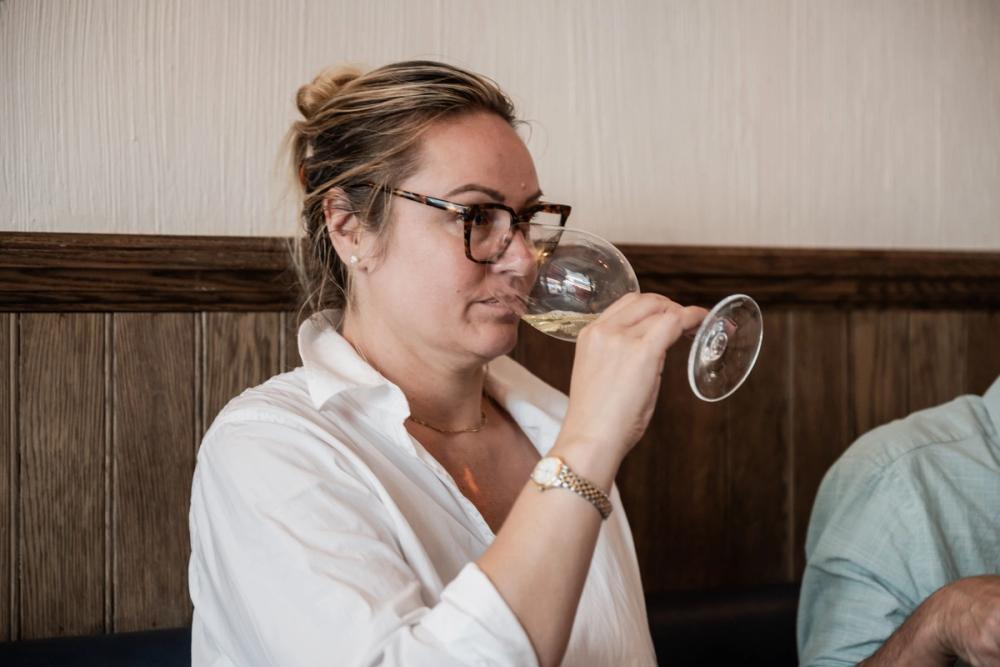
Erin Smith is a widely experienced marketing director, most recently heading up direct to consumer for Freixenet Copestick and managing director of its Slurp online retail business. She also helped build up the content and digital team at Majestic Wine and has a strong finance and journalism background as deputy editor of Harpers Wine & Spirit.
Sophie Jump, founder Jump Start
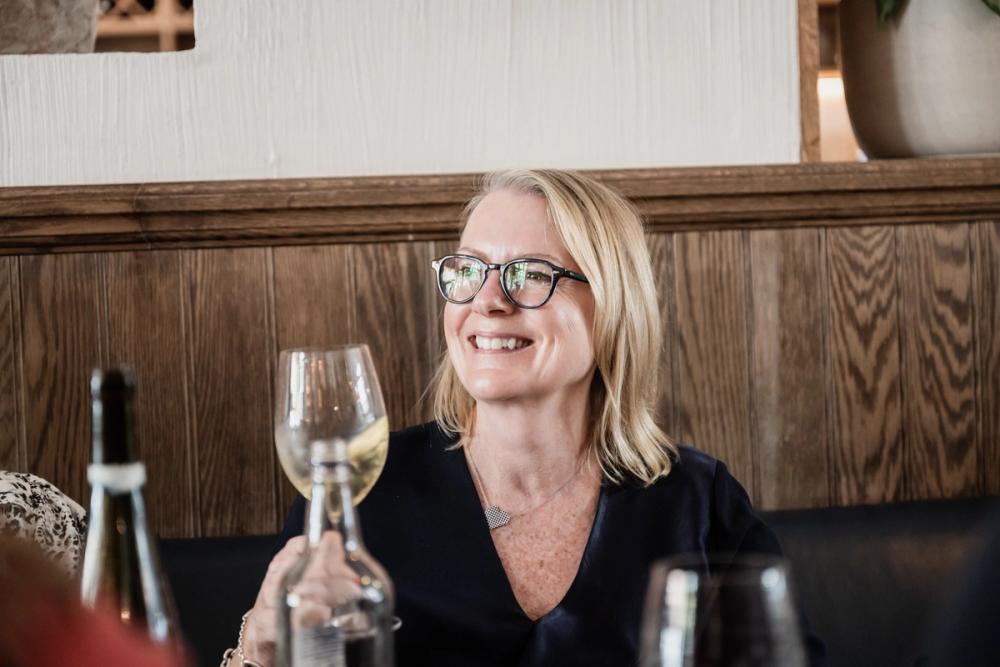
Sophie Jump is widely experienced in working with wineries and producers around the world in helping them develop their export strategies and tell their stories in key markets including the UK. She was also recently chief executive of the International Wine Clubs Association.
Bradley Horne, founder Wine Time London
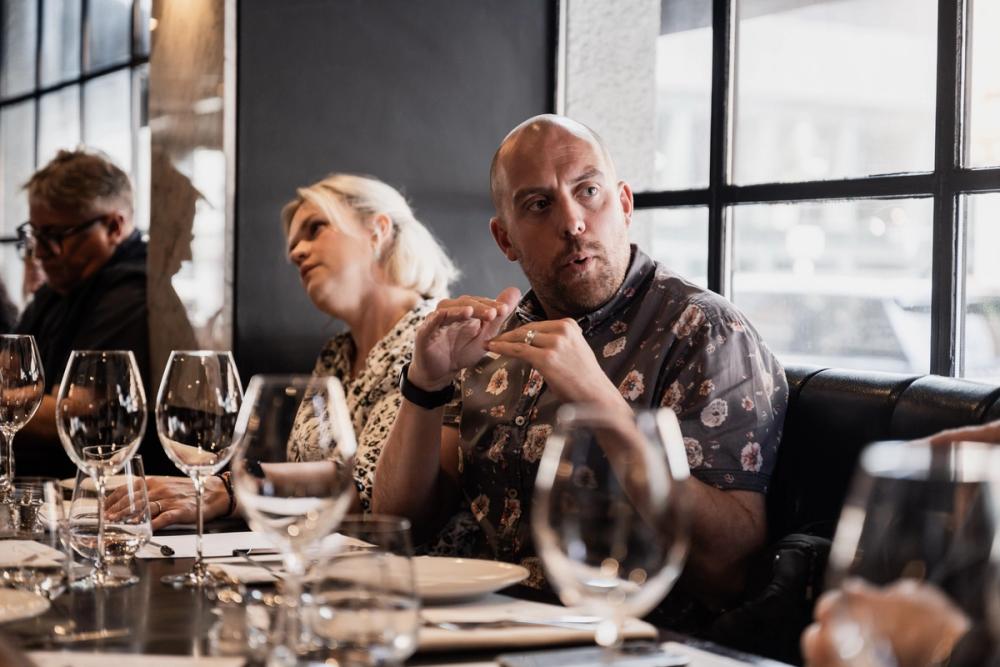
One of the most engaging and original wine communicators, writers and influencers in the market who has made a name for himself across social media with his refreshing wine reviews and helping to take to a wider audience.
Representing Soave
To help explain the region and talk through the wines was from the Consorzio Tutela Vini Soave e Recioto di Soave:
Corinna Gianesini, specialist wine educator and sommelier who is well experienced in representing Soave as one of its key consultants.
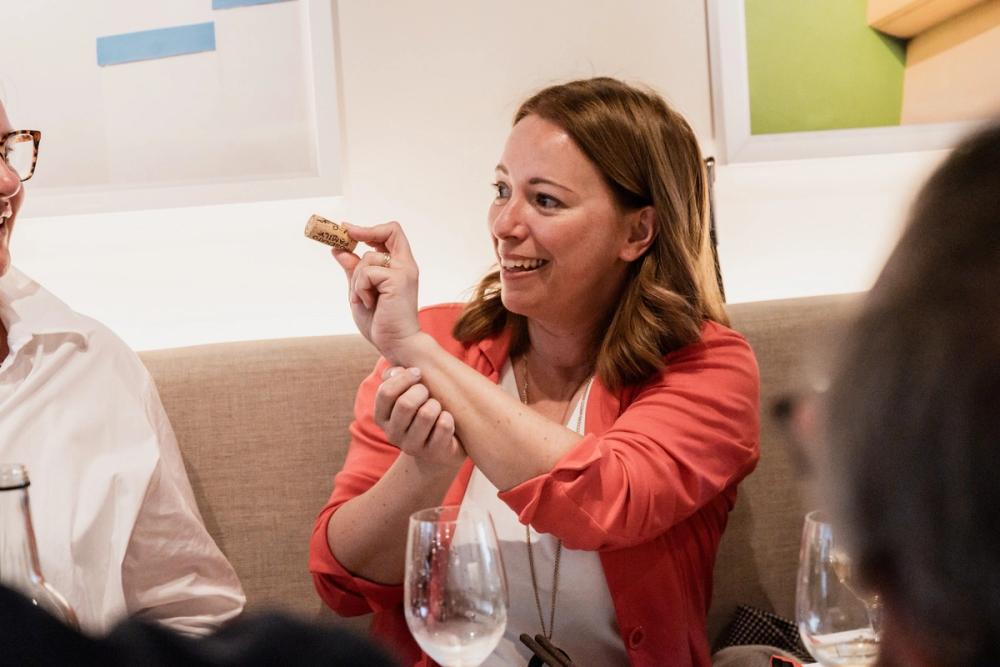
Lucia Vesentini, communications manager for the Consorzio who is widely experienced in wine public relations for the region and its position within Italy and around the world and also spent 20 years working as a freelance journalist.

The Restaurant Partners
To help showcase Soave and all the styles of wine it can produce The Buyer recruited three restaurants that could offer different styles of food all located close to each other in Kensington, Chelsea and Fulham in west London. They included.
Gaucho Sloane Avenue
89 Sloane Ave, London SW3 3AL
https://gauchorestaurants.com/restaurants/sloane-avenue/
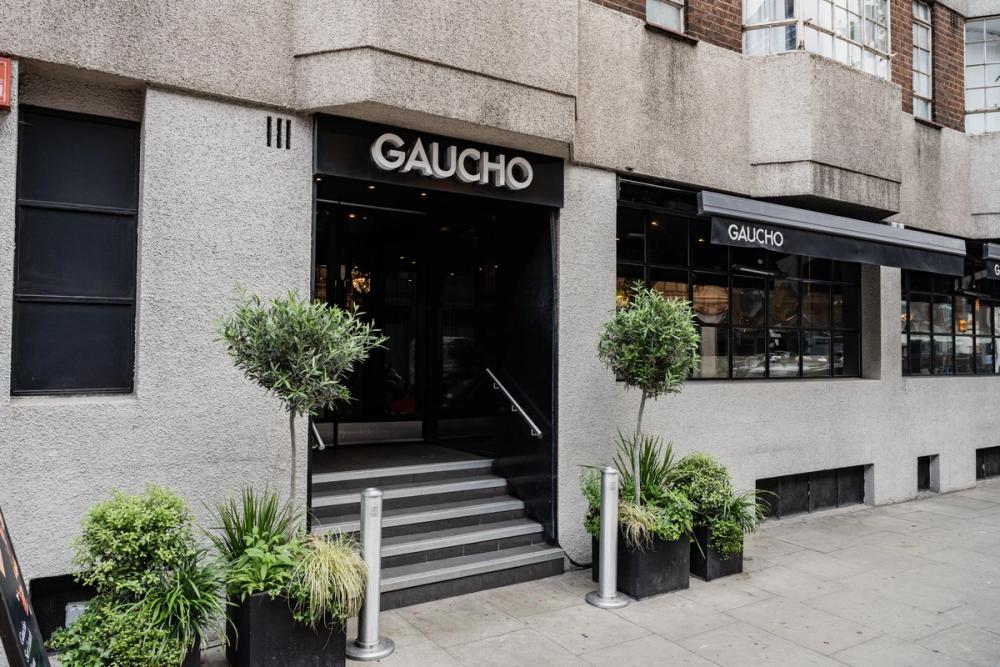
Part of the award-winning and still trailblazing Gaucho group of restaurants that have championed Argentine and best quality steaks for over 25 years that has had a new lease of life since becoming part of the Rare Restaurant Group and under the stewardship of chief executive, Martin Williams.
Brindisa, South Kensington
7-9 Exhibition Rd, South Kensington, London SW7 2HE
https://www.brindisakitchens.com/restaurant/tapas-brindisa-south-kensington/
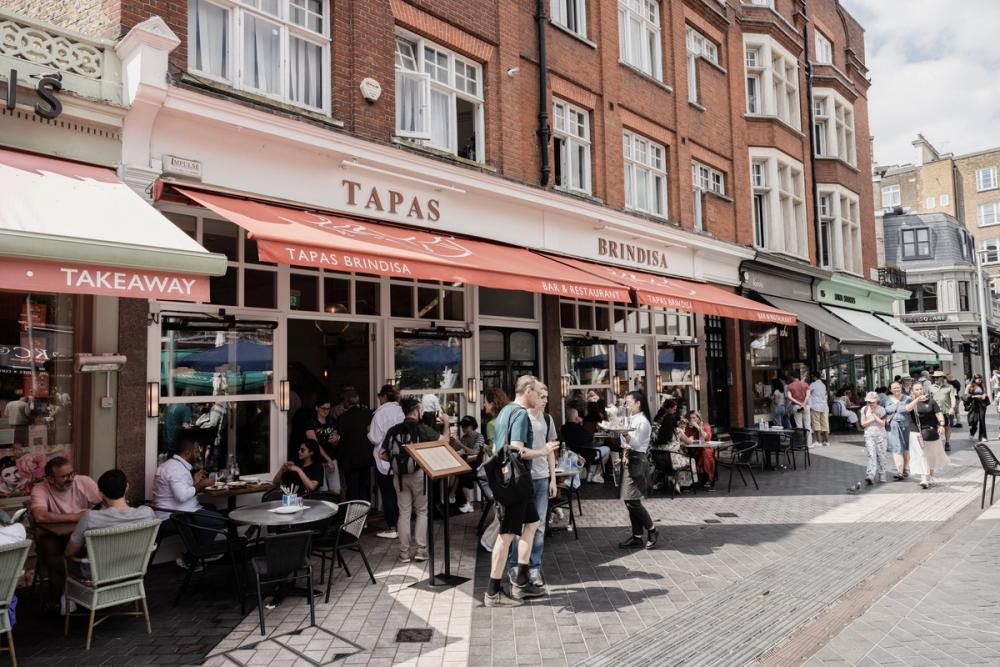
Brindisa has been the heart beat for the best of Spanish food and its wide range of tapas dishes in the UK for some time. Here the focus is on sharing and enjoying wine and food together.
HUŎ
9 Park Walk, London, SW10 0AJ
https://huo.london/
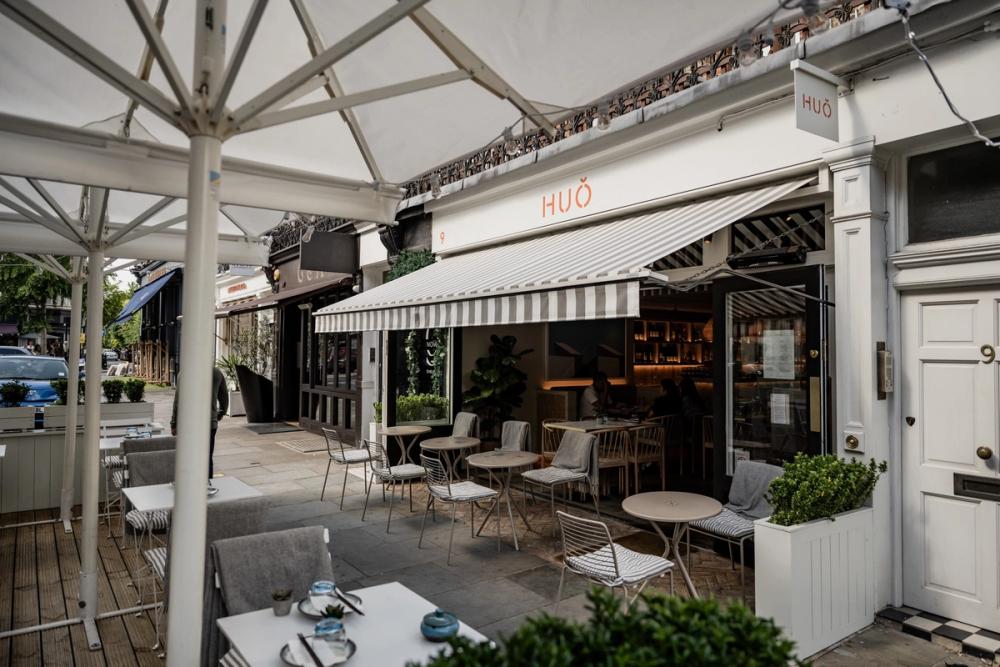
HUŎ bar & restaurant offers a wide range of clean, fresh and healthy Asian food encompassing carefully selected dishes from around China and Southeast Asia, all prepared from scratch using traditional Chinese, Thai, Malay and Singaporean disciplines.
Introducing Soave
The main Soave wine producing area is located to the east of the historical city of Verona and is characterized by a series of hills and valleys whose origins date back over 65 million years. Viticulture itself can be traced back to the Roman Empire and it has been setting the benchmark and standard for Italian white wines ever since. It was designated as a wine region in its own right in 1931 and became a DOC in 1968.
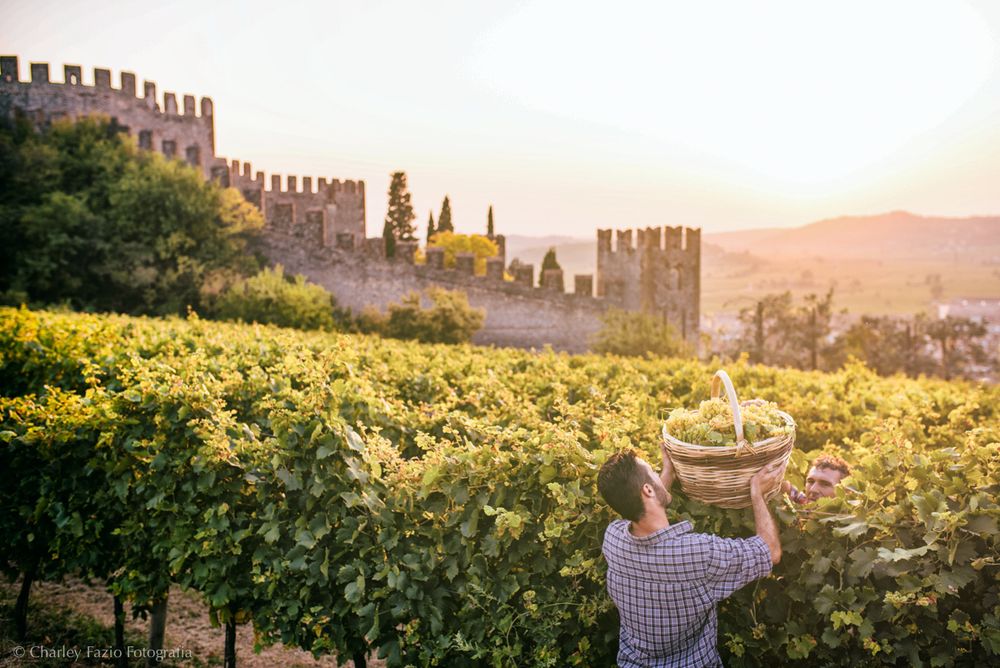
It has gone to become Italy’s most exported still white wine region with four out of five bottles produced exported to over 70 countries around the world. The region has the highest viticulture density in Italy, with about 3,000 small “estates” sharing only two hectares each on average.
One of the most important factors in understanding Soave wines is how different and varied they are depending on where they are from thanks to its rich tapestry of soils, climates and topography. As Corinna Gianesini explained: “Nature has shaped the land and man has tamed it with the wines we have been able to make.”
Soave and its hills and soils

Soave wines are heavily influenced by the hills and soils where they are made and can be split into four main areas:
Volcanic hills: found in the central area east of the Lessini Mountains. The soils vary in color from grey to yellow to reddish. They have a high mineral content and make wines that are fragrant, fresh and generally higher in acidity. They tend to be more complex and very well-balanced. The wines have an intensity and structure that is hard to find in other areas of Soave.
Calcareous hills: the stratified calcareous soils are located on the hills in the western part of the appellation. These soils tend to be shallow, with a rocky substrate. Some of the most elegant, aromatic Soave wines come from this area with floral notes of ripe and exotic fruits.
Volcanic plain: the non-calcareous soils are mainly in the Monteforte Valley, one of the most fertile areas of Soave. The soil is high in clay and volcanic debris. The clay soils are more drought-resistant and produce wines with notes of cinnamon, spices, berries and cherry. The deep soils give high acidity for particularly fresh and balanced wines with persistent aromas.
Calcareous plain: this soil type is more common in the Soave and Colognola plains. Its texture is mostly fine and can become sandy and rocky around streams. The wines have aromatic finesse, with an intensity and persistence that is hard to find in other areas of Soave. The most common aromas recall the scent of violets and white flowers.
Sustainability push

The Soave consortium invests in a continuous series of funding projects to help promote sustainability and biodiversity in the region. These are geared towards reducing the risk of erosion and improving soil management in hill and mountain winegrowing areas with high hydrogeological risk. These include:
* organizing training courses for vine growers aimed at safeguarding the region and environment.
* promoting the adherence to public or private environmental standards that can guarantee the long-term sustainability of wine production.
* continuous monitoring activity aimed at reducing the effects of climate change on the region and production.
Soave - facts and figures
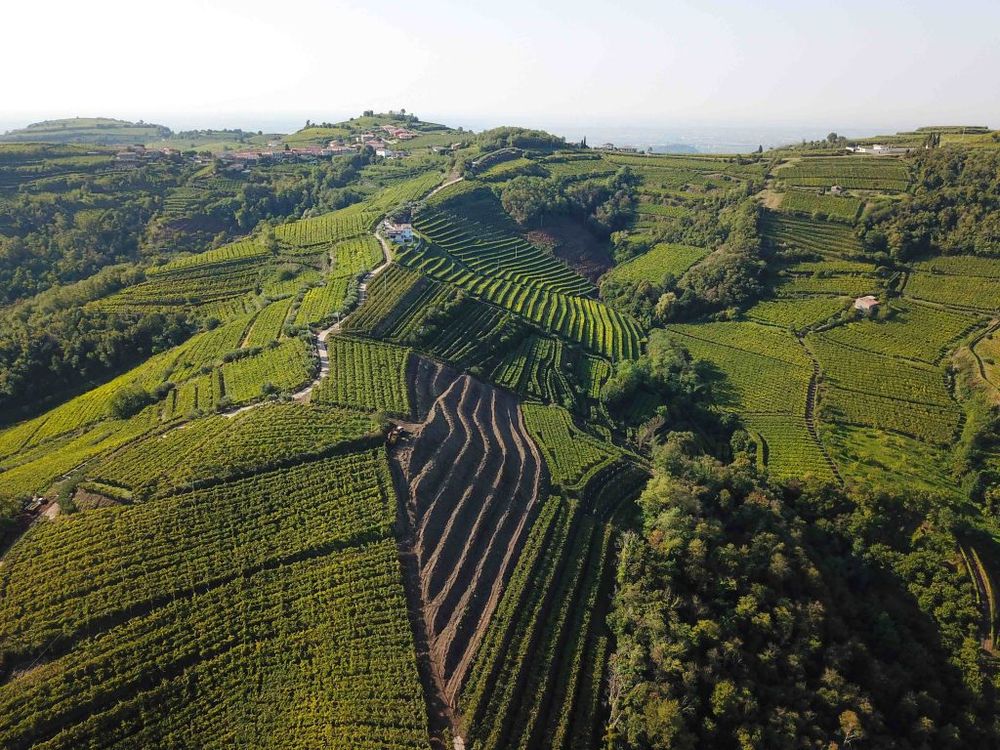
- 6,300 hectares covers the Soave DOC appellation.
- 40 million bottles produced in an average year.
- 13 municipalities in the Soave DOC appellation including: Soave; Monteforte; San Martino Buon Albergo; Lavagno; Mezzane di Sotto; Caldiero; Colognola ai Colli; Illasi; Cazzano di Tramigna; San Bonifacio; Roncà; Montecchia di Crosara; and San Giovanni Ilarione.
- Permitted types of wine include: Soave DOC; Soave Classico DOC; Soave Superiore DOCG; and Recioto di Soave DOCG.
- Grape varieties permitted by the production regulations: Garganega up to at least 70%; Trebbiano di Soave and Chardonnay up to 30%.
- Garganega: the number one grape variety of Soave by some distance and one of the oldest varieties in Italy has found its home in Soave. It offers aromas of almond, ripe fruit, green apple, white flowers and acacia flowers.
- Trebbiano di Soave: a delicate variety that was slowly abandoned in favour of the more vigorous Garganega. The high levels of malic acid and its neutrality provide freshness and delicate floral notes.
- Chardonnay: this worldwide variety is widely planted in Soave and is used in blends to help make softer, fresher wines.
- In 2019 33 ‘Additional Geographical Units’ (Unità Geografiche aggiuntive - UGA) were introduced that each refer to a specific production area within the Soave DOC appellation. These correspond to the name of a municipality and can be stated on the label if all the production stages of the wine are properly traced back to the harvest. Each one have their own historical and cultural characteristics that set them apart in the appellation.
- The Soave wine landscape is made up of different viticultural techniques that include:
- Pergola Veronese: the typical training system for Garganega that is very useful in dealing with drought or hail.
- Dry stone walls and terracing: used on hilly terrain and common for both vines and olive trees and are ideal for maintaining rainwater and are important biodiversity sites, particularly for local insects.
- Tree and woodland heritage: olive and cherry trees and woodland diversify the landscape, creating places for wildlife to shelter and nest.
The wine and food
In each restaurant the buyers had the opportunity to try a selection of wines that had been specifically chosen to complement the dishes from that restaurant.
Gaucho Sloane Avenue
The Wines
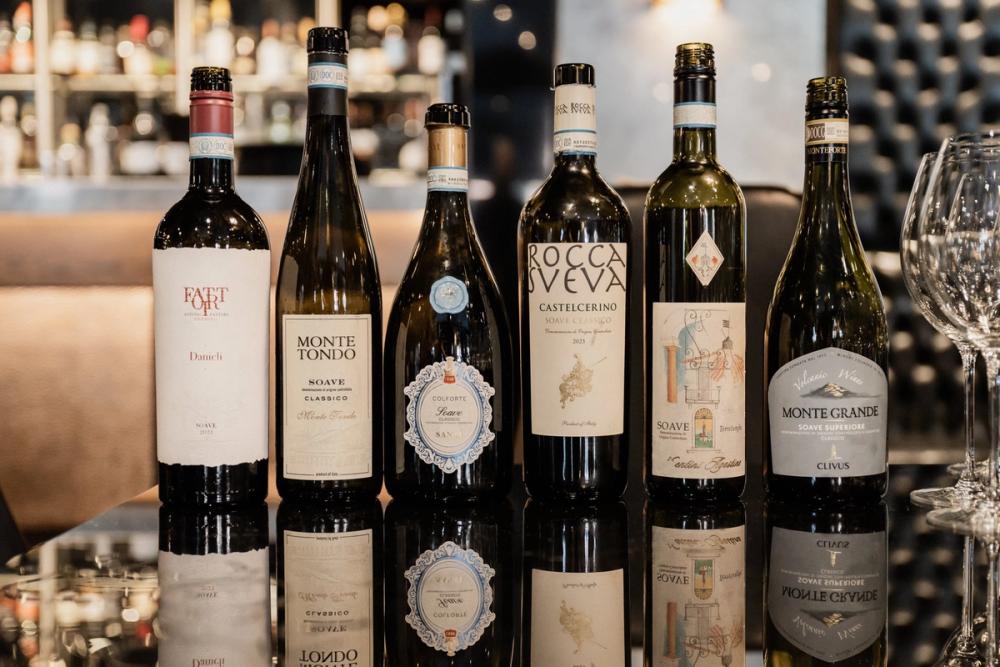
The wines for the first stop on the Restaurant Tour at Gaucho in Sloane Avenue were chosen for their freshness and how they best illustrate and showcase what Soave can do.
Soave DOC Classico “Colforte”, 2023 Santi.
Importer: Vinissimo Ltd
https://www.cantinasanti.it/en
Soave DOC Classico “Castelcerino”, 2023 Cadis 1898
Soave Superiore DOCG Classico “Montegrande” 2022 Cantina di Monteforte.
Importer: Liberty Wines
http://www.cantinadimonteforte.it/en
Soave DOC “Terrelunghe”, 2023 Vicentini
Importer: Philglas & Swiggot
https://vinivicentini.com/en/vicentini-agostino-valpolicella-e-soave-di-colognola-ai-colli-english/
Soave DOC “Danieli”, 2023 Fattori
Importer: Vinexus
Soave DOC Classico “Monte Tondo”, 2023 Monte Tondo
Importer: Astrum
The Dishes

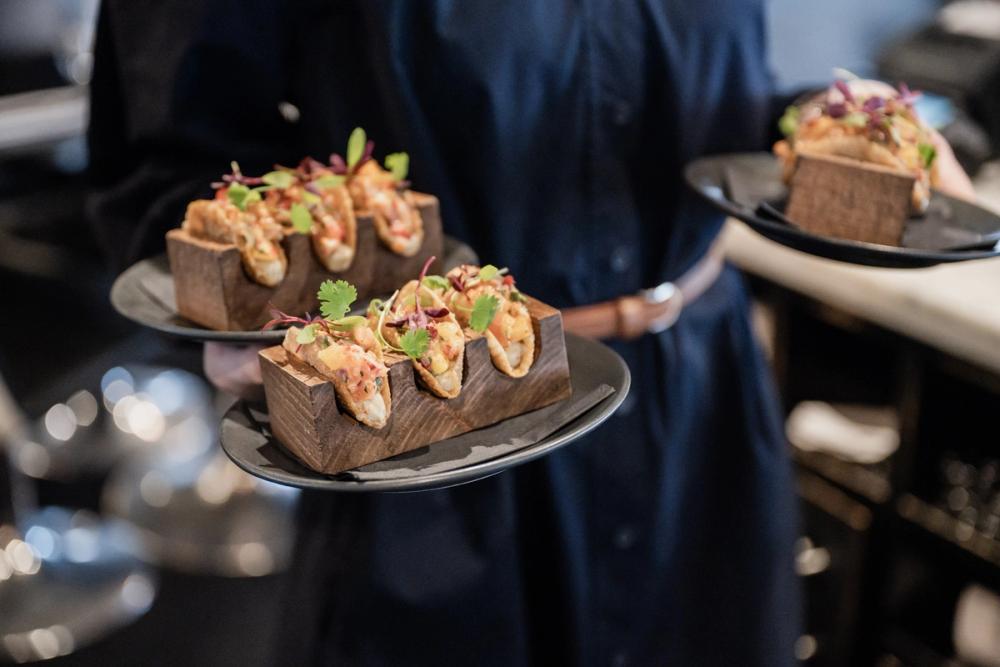
Burrata - Tomato salad infused with truffle, aged balsamic, toasted sourdough.
Salmon tartare tacos with mango salsa and avocado.
Empanadas - selection of sweet potato and provolone and chicken and chorizo.
Crispy chicken.
Grilled butterfly prawns with garlic and chilli butter.
Brindisa, South Kensington
The Wines
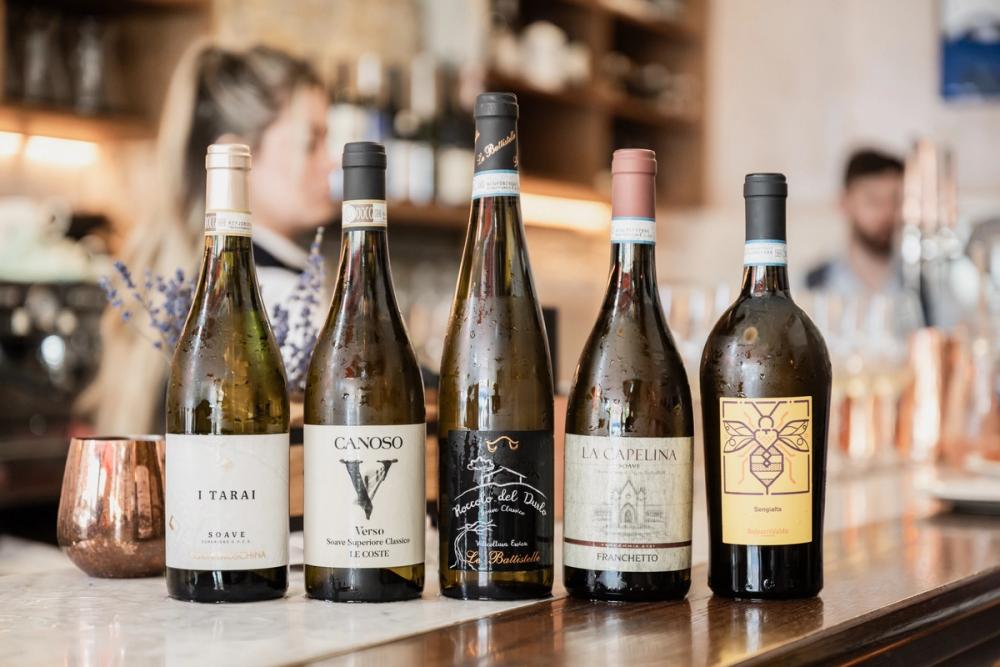
For the second stop on the tour and a switch of cuisine to Spanish the wines were selected to show the evolution and maturity in Soave wines.
Soave DOC Classico “Roccolo del Durlo”, 2021 Le Battistelle.
Importer: Lea & Sandeman
https://www.lebattistelle.it/en
Soave Superiore DOCG “I Tarai”, 2021 Corte Moschina.
Soave DOC Classico “Sengialta”, 2021 Balestri Valda.
Importer: Ellis of Richmond.
https://www.lebattistelle.it/en
Soave Superiore DOCG Classico “Verso - Le Coste”, 2021 Canoso.
Importer: Mondial Wine Ltd
Soave DOC “La Capelina”, 2021 Franchetto.
Importer: Wine and Earth
The Dishes
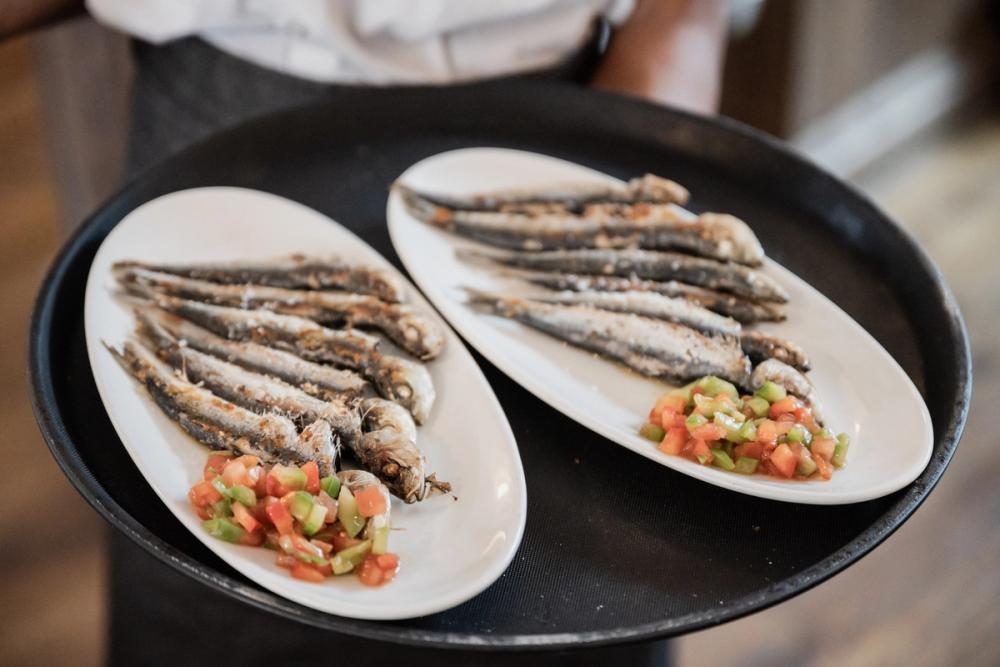

Croquetas de Guisantes - spring pea & mint croquettes, lemon zest.
Cangrejo Frito - tempura soft shell crab, lemon, alioli
Jamon Iberico de Bellota - hand-carved 100% acorn-fed Ibérico ham from Señorío de Montanera.
Tortilla Espanola - traditional potato & onion omelette, alioli.
Bacalao a la Bilbaina - Bilbao-style Skrei cod, cherry tomatoes.
HUŎ, Fulham
The Wines
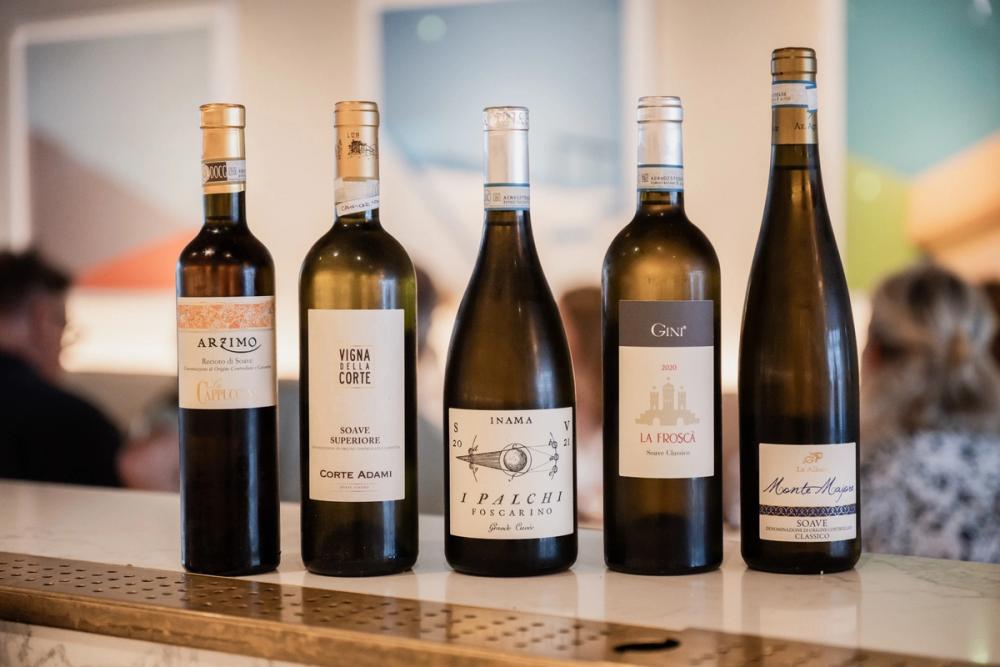
The last restaurant on the tour was a chance to first see how well Soave can pair with against premium Chinese cuisine but also analyse what changes there are in the wines when they have the chance to age and mature over a period of years with wines dating back to 2018.
Soave DOC Classico “La Froscà”, 2020 Gini
Importer: Justerini & Brooks
Soave DOC Classico “I Palchi Foscarino”, 2021 Inama
Importer: Winetraders
www.inama.wine/en
Soave Superiore DOCG “Vigna della Corte”, 2018 Corte Adami
Importer: Gerrard Seel Wine Merchants
Soave DOC Classico “Monte Majore”, 2020 Le Albare
Recioto di Soave DOCG “Arzimo”, 2018 La Cappuccina
Importer: Various
The Dishes
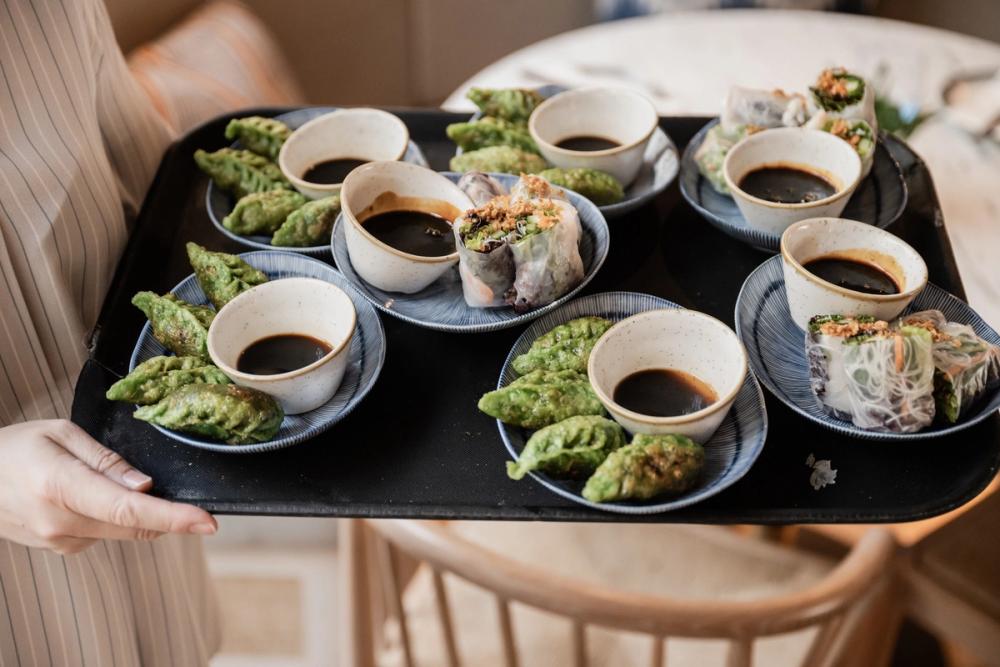

Vegetable gyoza.
Spicy Hunan pork dumplings.
Vietnamese Prawn summer rolls.
Mixture of chicken and vegetable lettuce wraps.
Thai aubergine noodle cucumber salad.
Yuzu cheesecake.
The Restaurant Tour
Corinna Gianesini was able to start the tour by giving the buyers an initial overview of the region and how much the wines they taste will vary depending on where they are made and the big influence the local growing conditions will have on the finished wine in a glass.
With wines from western Soave being dominated by the volcanic debris that covers so much of the land there, compared to the strong maritime influence on the eastern side of Soave that is rich in fossils and limestone, she said.

Corinna was able to describe and introduce the Soave wine region to the panel
Everywhere you look, though, Garganega, the white grape variety is, the “Queen of Soave” and must make up at least 70% of the blend, she stressed.
The buyers were mostly united in their initial thoughts on Soave and what it means to them - with quality and value for money being the two big stand out factors.
Harry Crowther started the debate by claiming Soave’s role within Italian wine overall cannot be over estimated. “It helped put Italian wines on the map. It is a style of wine you can also move through the gears with. From a simple, welcoming style that gets serious very quickly.”
Gianesini agreed: “Soave helped Italian wines be known all around the world.”
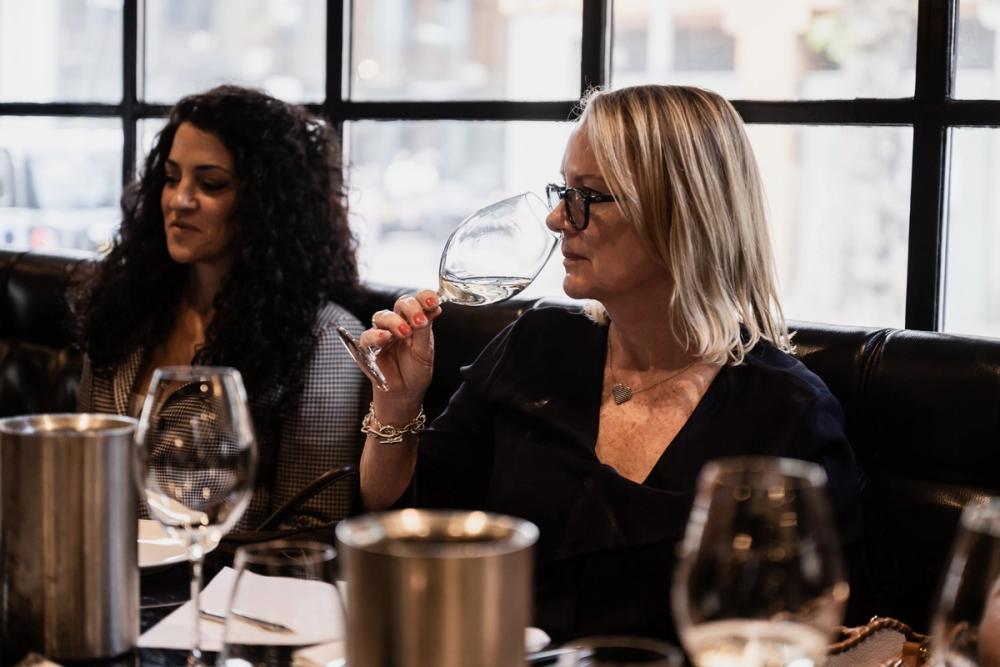
Sophie Jump made the argument for describing the Soave wines region as a brand in its own right
Sophie Jump added: “Soave is a brand in the same way that Chablis or Muscadet is a brand. It’s memorable and a very easy style of wine to drink.”
“When I was buying wine for Waitrose 20 years ago, Soave represented best selling quality wine that was very inexpensive and offered very good value,” said Joe Wadsack. “It was also seen as having a neutral and simple style which a lot of people like.”
Bradley Horne thought having an unassuming image “gets Soave’s foot in the door - particularly for older drinkers who understand it.” The opportunity clearly now lies with a new, younger drinker too, he added.
Abbie Bennington said the Consorzio and the region should be pleased to know that in the consumer tastings she hosts “people will know Soave and are engaged with it and they really want to know more about it - you have that recognition”.
Which is what the restaurant tour was all about. A chance to shine a different light on Soave and hopefully showcase what Soave can offer buyers now and in the future. As Lucia Vesentini from the Consorzio explained: “Everything has a past, our focus now is on today and what the perception is. We want, and have to, talk to new consumers.”
Increased quality
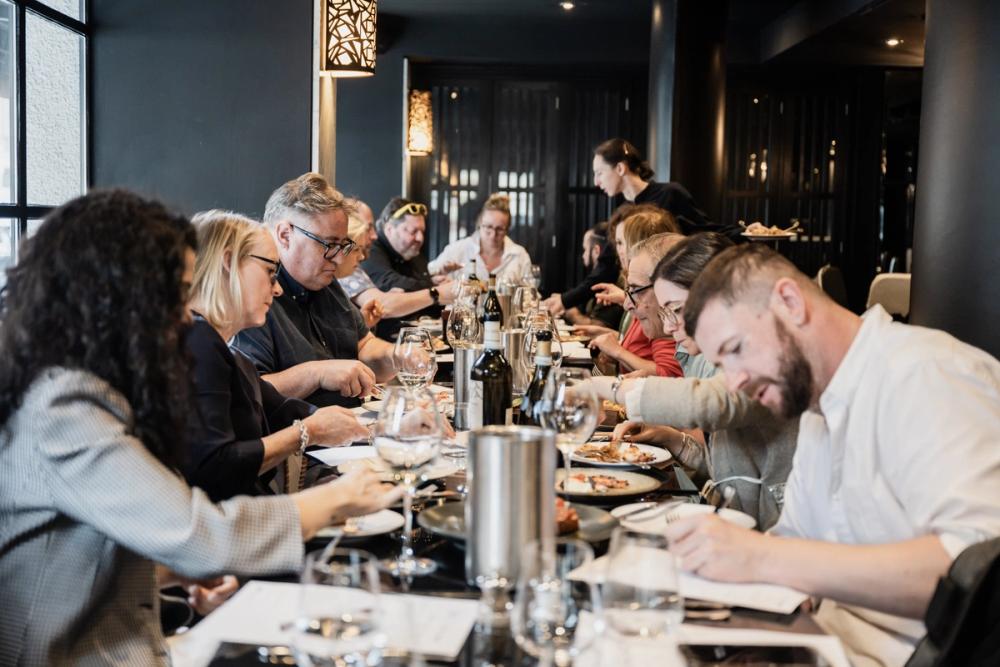
The panel had the chance to pair the initial set of Soave wines with a selection of dishes at Gaucho Sloane Avenue
Crowther said he was excited to take part in the tour as he has aware through his own buying that the region was now making such a wide range of wines with increased layers of quality. “It feels like the volume has been turned up,” he added.
“As you go up those quality tiers, the wines get more attractive,” said Wadsack.
Erin Smith said Soave has a crucial role to play for Italian white wines in general. As she explained: “For consumers their entry into Italian wines, particularly Italian white wines maybe Pinot Grigio, but Soave has really been able to elevate Italian white wines appeal. It adds an element of sophistication and something more interesting. Making is an essential for merchants to add credibility to their range.”
Armit’s Alessandro Comitini said he grew “drinking a lot of Soave wines” and was pleased to see how fast it is “evolving away from its neutral style”. “It’s a region that has gone from competing a lot with Pinot Grigio to offering more serious wines,” he said.
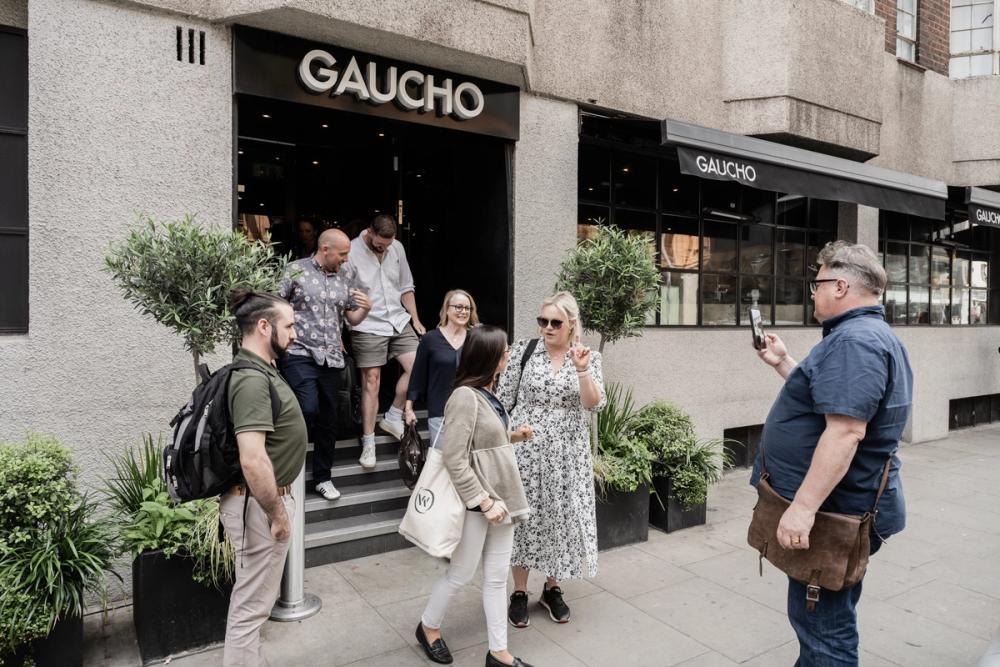
Onwards and upwards to the second restaurant and a short walk to Brindisa near South Kensington tube station

Harry Crowther and Bradley Horne avoid the temptation of popping into Claude Bosi's restaurant in the classic Bibendum building
Enotria’s Sergio de Luca said he now welcomes the opportunity to import what he calls “less commercial and bag in box” Soave wines and it’s great to see the quality of wines that have been coming into the market over the last few years. “I have always wanted something better for Soave,” he added and is keen to add more premium Soave wines to Enotria’s list.
Silvia Panetta said the tour was a great opportunity for her as a sommelier to see so many Soave wines side by side and to be able to see the different tiers of quality on top of the “typical limestone and tropical style”. “It’s clear that as yields go down the concentration and aromas [in the wine] go higher,” she added.
Bottle shape and weight is also an important factor in raising Soave’s quality and premium credentials, said Gianesini, with a number of producers now looking to work with lighter, more sustainable bottles.
This was another welcome step applauded by the buyers with Jump stressing how important it is for a region or a country’s overall image to have quality packaging and labels as well as the bottle format.
Ageing potential

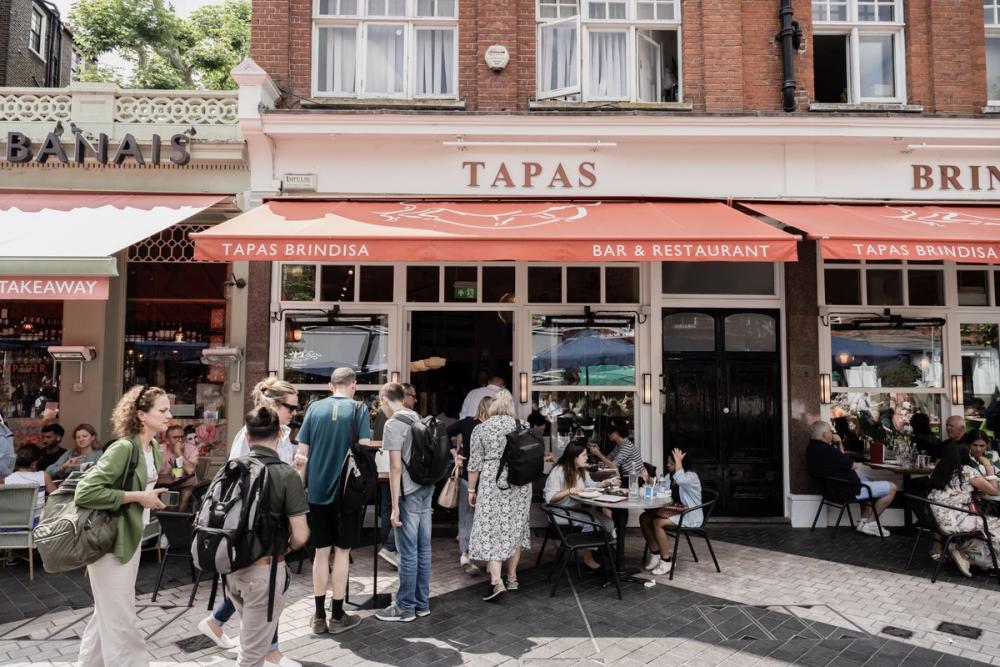
The group arriving at Brindisa
The buyers also had the opportunity to taste more aged wines with vintages going back to 2018. Wines that are not always available in the market, which is a shame said Wadsack: “The region clearly has the ability to make world class wines that age and have some weight.”
The challenge is getting more producers to hold wines back. “But in Italy people drink wine young,” said Comitini. De Luca agreed: “The culture in Italy is to sell wines young but there is so much potential in Italy to age white wines in particular.”
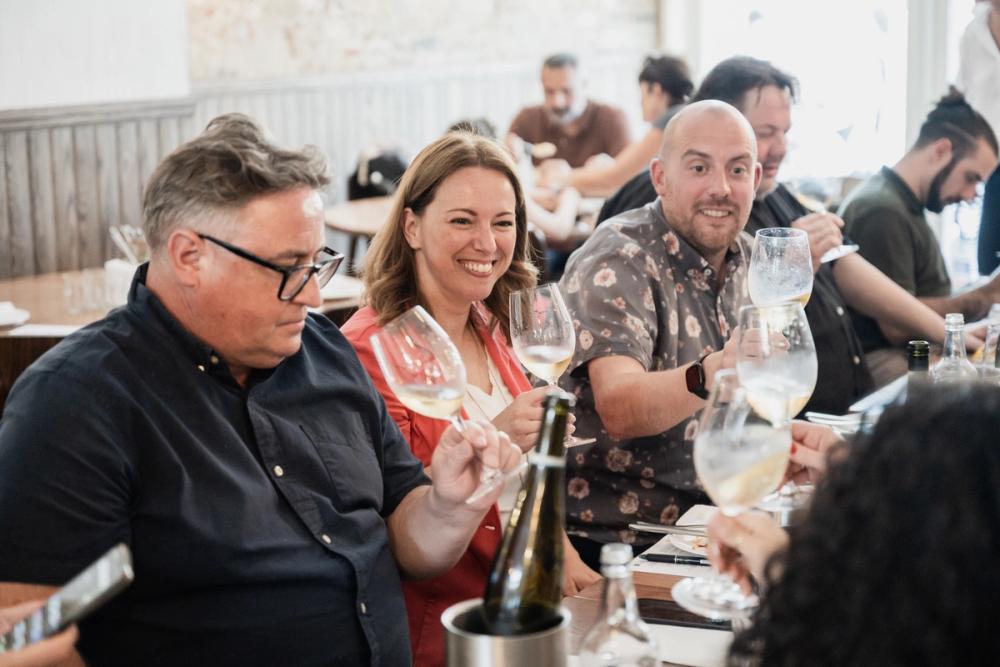

But equally buyers are unwilling to buy wines that are not from that year’s release, said Wadsack, when there is clearly potential, particularly for restaurants to age wine and then sell it at a higher price.
In summary
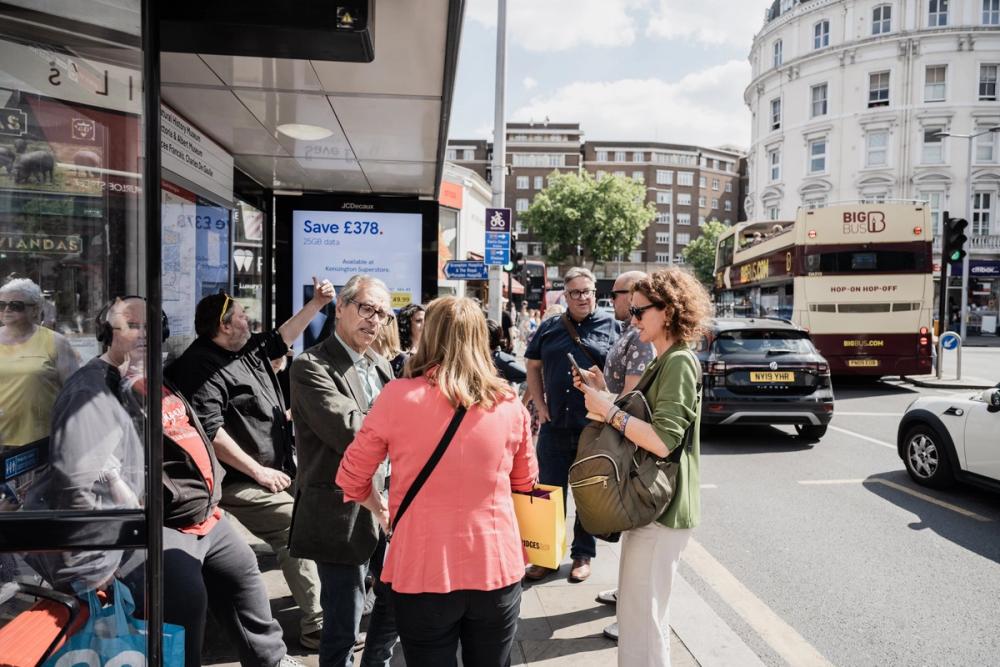
Waiting for the 14 bus to head down Fulham Road to third restaurant

Tickets please...
Jump said the tour and the tastings in the three restaurants had been “such an eye opener” for her.“I am surprised at how every single wine is so individual, have stunning quality and how they all work so well with food. When you think of Soave you think they are unrecognizable from each other when they are actually so different and come from such ancient soils.”
Horne said it was good to be able to taste and see how the wines paired with the different styles of food and cuisine. “We don’t always think of other cuisines when we look at Soave wines and it has certainly opened my eyes to what sort of pairings can work together. It makes you think outside the box. Like white wine with jamon for example.”
“The wines have been fantastic and I have learned so much today,” added Wadsack who agreed with Horne that the food pairings were a real revelation, particularly how Soave stands up against the big fat, rich dishes.
Comitini said he really liked how the “sweet and saltiness” in the dishes across the three restaurants worked together. “In Italy we eat a lot of pasta that also has that sweet and saltiness in it.”
He was excited to so much more “colour, character and texture” in the wines that could easily be an “alternative to Chablis”.
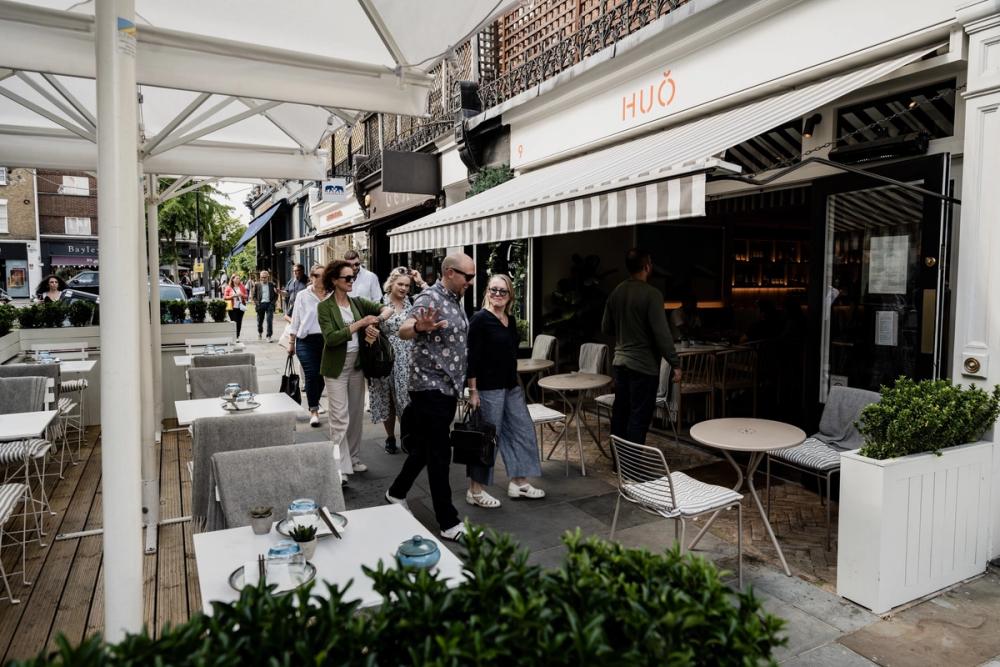
Arriving at HUŎ for some premium Chinese dishes
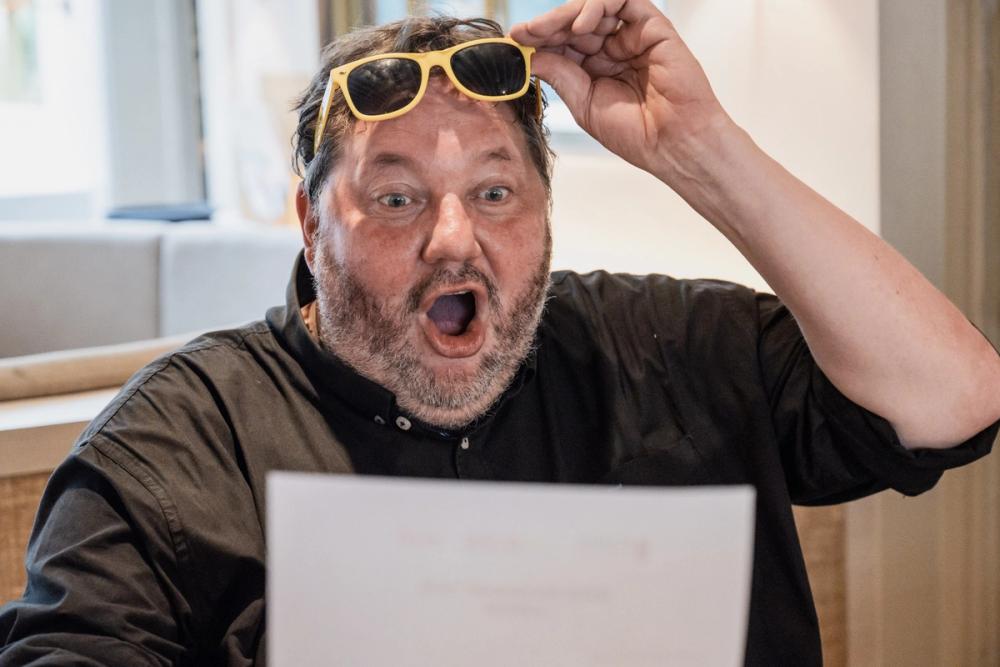
Joe Wadsack excited by the menu at HUŎ

Getting down to business...
Erin Smith said it was good to see “a real sense of place” in the wines and stories that would work particularly when selling direct to a consumer that might be looking for an alternative to say Pinot Grigio.
The challenge now for the buyers, sommeliers, consultants and influencers is taking what they have learnt on the tour into their everyday work. For Horne that means really getting to understand the soils in Soave and the influence they have on the wines. “It was great to be able to put all that into context,” he said.
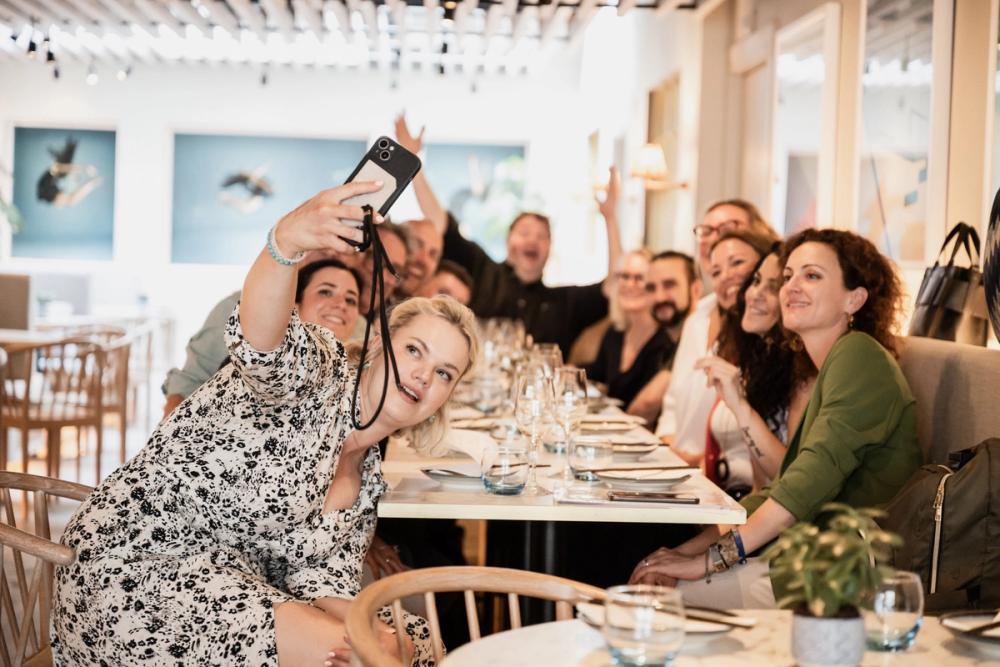
The restaurant tour was also a great opporunity for the group to network and make some good new contacts
“We still need to educate the consumer about what Soave can offer. To give them the chance to share that experience, but the good news is this is a wine that is easy to communicate,” said Panetta.
De Luca said the big issue is “accessibility” and the chance for buyers to be able to see more of the styles and age of wines that took part in the restaurant tour available in the market. That there is so much more to Soave than the £9 supermarket wine and that buyers “understand there is quality and so much difference in the region”.
Bennington said she was excited to see how many different aspects there are to Soave that can excite and interest new and younger drinkers as well as the traditional consumer that knows the region well.
Or as Crowther so neatly summed up: “There is something there for everyone.”
* You can find out more about Soave and the region here.
